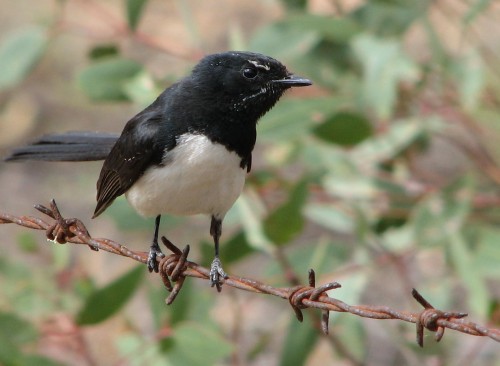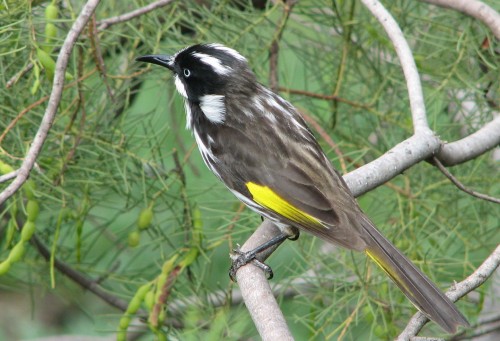Travelling from Orbost to Gisborne in Victoria
During our holiday in January earlier this year, one of our longest days of travelling was to go from Mallacoota in the far south east of Victoria all the way to Gisborne north of Melbourne. We were on the road all day with just short breaks for morning tea and lunch. There was little time for birding except for those short stops.
After morning tea at Orbost we headed on west towards Melbourne, travelling through picturesque Lakes Entrance and Bairnsdale. I didn’t bother keeping a list of birds seen along the road; there weren’t all that many to see because by mid morning it was getting rather warm. I was hoping to reach Sale for lunch, but we made only as far as Stratford on the River Avon (no -not THAT one – this one’s in Australia). This is Ben Cruachan country but for the second time in little over twelve months, we didn’t have time to call in on Duncan. Pity about that. (Keep the billy boiling, Duncan.)
At Stratford we found a suitable, albeit rather warm, picnic area for lunch. I managed a short list of birds during our short stay, including Common Starling, Willie Wagtail, House Sparrow, Sulphur Crested Cockatoo, Spotted Turtledove and Rainbow Lorikeet. Nothing to get terribly excited about.
Probably the most common birds around were the Common Mynas which seemed to be everywhere. Pity about that.
This whole area is yet another place I’d like to explore further over a week or two, and not just drive through. It wasn’t long before we were scooting along quickly on the freeway heading into Melbourne, then on the City Link and on towards our friend’s place in Gisborne. In all the times we’d travelled this route in recent years, this was the quickest and most trouble free. We actually arrived in Gisborne a little ahead of schedule.
It was a wearying day with long hours in the car and little opportunity for birding. Some days are like that.
Aggressive Bird Behaviour in the Garden
While working in the garden yesterday morning I was suddenly alerted to a noisy confrontation nearby. Our resident Willie Wagtails love to frequent one particular spot where there is an abundance of insects.
Suddenly a New Holland Honeyeater dived in to reap his share of the smorgasbord. The Willie Wagtail became quite aggressive, fanning his tail up high, ruffling the feathers all over and calling in what seemed to me to be in quite an angry – perhaps even distressed – way.
The honeyeater retreated to a nearby tree, only to swoop in repeatedly over the next few minutes. Each time the honeyeater would snap at the Willie Wagtail, zip away a metre or so, grab another insect, and retreat hurriedly to the refuge tree.
These attacks seemed to trigger even more aggression in the Willie Wagtail who decided to front up to the interloper. They then faced each other at about ten paces (bird step size – about 10cm) angrily calling in each others’ face. One last beakful of food and the New Holland Honeyeater decided that other parts of the garden were more attractive anyway, and it flew off. The Willie Wagtail continued to feast contentedly on his little patch.
Further reading:
- Aggressive birds – articles from my archives
This post updated in September 2015.
Willie Wagtail accident
One of the common bird species around home here in Murray Bridge is the Willie Wagtail. This is a widespread species throughout Australia and is familiar to most people, even those with little interest in birds. We have a resident breeding pair in our garden.
From time to time one of them comes to visit our bird bath. This morning I saw the water splashing in all directions so I raced into the office to grab my digital camera. This is one species that has eluded my camera thus far.
I managed to take about eight photos before disaster struck. The Willie Wagtail upset the bird bath, knocking it and the contents to the ground. I was surprised because I had thought that even bigger birds would not be able to tip it over. It’s perched on the cut down trunk of an old dead mallee tree and has a brick inside it.
The Willie Wagtail nonchalantly flew to a nearby branch, gave his feathers a shake, preened for a few seconds and then flew off.
Perhaps I need a bigger brick.
Related articles:



